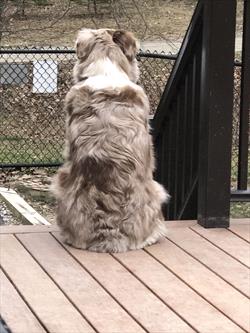A: Your dog is not stubborn. Either they do not understand what you are asking, or they are not motivated.
If you are unclear or inconsistent in training, your dog may be confused. If your dog is jumping on you and you respond each time differently by saying sit, down, or off, they may not know which behavior you want. They may do all those actions or may not do any.
Reinforcing a behavior, good or bad, increases the likelihood of it happening again. Food, play, and affection are positive reinforcements for your dog. If you do not reinforce good behaviors often, or at all, they may stop offering the behavior since you are not paying them. Even when your dog offers the behavior reliably, they should be paid periodically. Sometimes you may need to increase the value of the reinforcement and offer chicken, cheese, or a game of fetch. This will help keep them motivated.
Distractions, pain, or fear may prevent your dog from doing what is asked. If they have a solid history of successfully doing the behavior and they stop, something has changed, and it is your responsibility to figure out the cause. If your dog is in pain, he may avoid doing a task that may cause or aggravate pain or discomfort. Fear can cause your dog to avoid performing a cue, either from fear of punishment, fear of performing the behavior, or the environment.
If pain does not seem to be a factor, move to an area with fewer distractions or practice at home. Begin with the last step they did successfully and reinforce well. Gradually reintroduce distractions and watch if your dog avoids doing the behaviors.
Training should be fun for you and your dog. By meeting your dog’s needs, you are more likely to have compliance.



